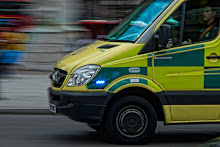Turns out that calling people elderly is now deemed ageist, go figure. Certainly not going to stop me, personally I think this whole politically correct movement has gone way too far for far too long.
Anyway, here are a few key points I picked up:
- Physiological Changes in the Elderly include
- Cardiac
- Pulmonary (decreased mucociliary clearance)
- Neurological (the brain shrinks with age)
- Renal (less nephrons available)
- GI tract
- Immune systems
- Musculoskeletal
- Meds: May mask problems (more on that later)
The elderly often take
- Antihypertensive drugs
- Antiplatelet/Anticoagulants
- Antideressant and other related psychiatric drugs
- Beware of Co-morbidities in the elderly
- Most common site of injury for elderly patients:
- Head
- Pelvis
- Lower limbs
- Wrist
Older patients have 2x the risk of sustaining c-spine injuries
- each rib fracture increases mortality around 19%
- Patients with >2 rib fractures should be admitted to hospital
- ABCs
- Reduced Airway Reflexes
- Difficult Airway
- Less sedative doses
- Higher vent rates
- Diagnosis of shock difficult (antihypertensives, Beta Blockers...)
- Many elderly patients have a Vitamin D deficiency. Vit D plays an important role in bone strength, and can be obtained from sunlight exposure.
- Adapted for us ambulance staff: If a patient has had a fall, or is likely to have a fall (regardless if they refuse transport to hospital), get a Falls Risk Assessment done. This may vary wherever you are, but it's usually linked to social/community/other government service.
- Another prehospital tip: document on your case sheet how the patient lives: 'independent', 'independent with support' etc. Important for the hospital and further treatment, if any intervention is needed (stairlift, rails, ramps etc).
- Some definitions:
- older: >65 yrs
- oldest: >85yrs
In Australia, an indigenous (aboriginal) person is classed as 'older' above the age of 65. This is due to their shorter average life span (~19yrs les than the typical white population).
---
All in all a great seminar, with a few good hints and background information that I picked up. I'll keep those in mind the next time I have an ELDERLY (sorry, couldn't resist) patient. Which will be soon, as they always seem to have a tumble here and an ache there.
I don't mind, hey, I signed up for this job well knowing what it's all about!


